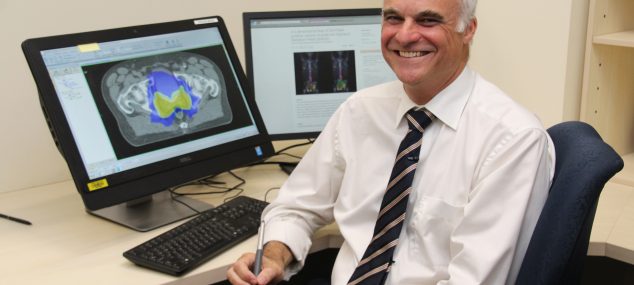An Australian study has shown that three approaches in adjuvant radiation therapy achieve excellent long term curative outcomes with minimal toxicity in women with conserved breast cancer.
Radiation oncologists in NSW say their newly published five year outcomes have vindicated the use of hypofractionation, intensity-modulated radiation therapy (IMRT) and treating women with conserved breast cancer in the prone position with radiation therapy.
Study leader Associate Professor Tom Shakespeare, a radiation oncologist working in the Northern NSW, says the evaluation is one of the first in the world to assess the long term outcomes for women managed with the three techniques in addition to breast surgery and chemotherapy.
“These new techniques are able to substantially reduce the side-effects of treatment, in particular, prone breast positioning is beneficial as radiation is distributed evenly and accurately, limiting exposure to the rest of the body,” he said.
“In our evaluation no patient had a cancer recurrence in the treated breast. We also found that no patient had significant side effects, and all evaluated patients rated their cosmetic outcome as good or excellent.”

A/Prof Tom Shakespeare
The study followed up 155 women with invasive breast cancer for a median of 52 months after they were treated with 40 Gy in 15 fractions over three weeks to the whole breast., starting from 2012
The median age of women in the study was 62 years, 79% were T1, 21% were T2, and 12% were node-positive. Grade was 1 in 27%, 2 in 44% and 3 in 30%; 87% of women were oestrogen receptor positive, 3% were HER2 positive, and 11% were triple negative. 74.8% endocrine therapy and 32.3% chemotherapy.
In terms of treatment, 75% received adjuvant endocrine therapy, 32% adjuvant chemotherapy, and 59% of patients received a 10 Gy in 5 fraction supine boost.
During five years of follow up no patient developed local recurrence, and one regional recurrence was successfully salvaged. Six patients (3.9%) developed metastases, and 1.9% died. The five-year local recurrence-free, regional recurrence-free and breast cancer-specific survival rates were 100.0%, 98.2% and 94.8%.
Associate Professor Shakespeare said it was notable that the techniques minimised toxicity such as long term breast pain, with late grade 1 and 2 breast pain occurring in 20% and 1.3% of patients, and only 11% having new pain compared to pre-radiation. Also of interest was the finding that no patient developed radiation-induced pneumonitis, pulmonary fibrosis, rib fracture or cardiac toxicity. All patients scored cosmesis as ‘good’ or better.
He said the combination of these three techniques has been adopted in northern NSW centres since 2012, and the evaluation had shown they delivered good curative outcomes with few side effects.
“We report on one of the largest published cohorts followed long term after being treated with adjuvant hypofractionated prone breast IMRT on a common protocol. This is a well-tolerated technique for patients with conserved breast cancer, with excellent locoregional control rates and minimal toxicity,” the study authors concluded.
The findings are published in the Journal of Medical Imaging and Radiation Oncology.